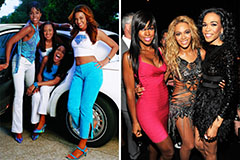The WWF Champion Belts hold a one-of-a-kind and fabled place in the annals of professional wrestling. More than simple accessories, these concrete symbols of triumph represent the pinnacle of success, the end result of blood, sweat, and rips dropped within the squared circle. For decades, the view of a wrestler lifting a gleaming WWF (later copyright) champion belt above their head has actually been an famous image, immediately well-known even to those with only a passing familiarity with the sport. These belts are not just prizes; they are physical manifestations of stories, traditions, and the ever-evolving landscape of professional fumbling.
The history of WWF Champion Belts is as rich and dynamic as the business itself. From the very early days of the Globe Wide Wrestling Federation (WWWF) and its inaugural championship, the family tree of these titles tells a engaging narrative of wrestling's growth and transformation. The original WWWF Championship, held by the famous Buddy Rogers, was a fairly easy design, a unlike the intricate and typically personalized belts of today. Yet, it laid the structure for a practice of symbolic equipment that would pertain to specify battling excellence.
As the WWWF transitioned into the WWF under Vince McMahon Sr. and later his child, Vince K. McMahon Jr., the championship belts advanced in tandem with the company's growing popularity. The " Large Eagle" belt, synonymous with the Hulkamania age, came to be an immediately recognizable emblem of wrestling's mainstream advancement in the 1980s. Its huge, impressive eagle style, usually curtained over the broad shoulders of Hulk Hogan, represented the epic individualities and flourishing appeal of the moment. This era sealed the champion belt as a essential storytelling gadget, a graph of dominance and the best reward that every wrestler aspired to obtain.
The 1990s introduced a brand-new era for the WWF, noted by a shift in battling design and the development of new super stars. This period also saw the introduction of brand-new WWF Champion Belts, reflecting the altering aesthetic and the characters holding them. The "Winged Eagle" belt, with its even more intricate layout featuring multiple plates and a prominent winged eagle, became the sign of champions like Bret Hart, Shawn Michaels, and Rock Cold Steve Austin. This layout is often thought about among one of the most famous and cherished in wrestling history, standing for a golden era for the company and its top title.
The Mindset Period, a period of edgier stories and rebellious characters, brought with it even more advancement in the style of the WWF Championship Belts. While the "Winged Eagle" continued to be for a time, the appearance of the " Cigarette smoking Head" belt, specifically developed for Stone Cold Steve Austin, marked a separation from practice. This unique belt, featuring a head with smoke originating from its eye sockets, emphasized the rebellious and anti-establishment identity of one of wrestling's largest stars. It showed the company's desire to personalize the champion to fit the character, additional improving the storytelling potential of the title.
The turn of the millennium and the ultimate rebranding of the WWF to copyright saw further iterations of the championship belts. The "Undisputed Champion" period, following the acquisition of copyright, presented a new layout that linked the WWF and copyright Globe Heavyweight Championships. This belt, while originally representing a unification, at some point gave way to the " Rewriter" belt, notoriously associated with John Cena. This controversial style, including a large copyright logo design that can spin, was both admired and criticized for its fancy and unique look. Despite point of view, it came to be identified with Cena's leading regime and the era he defined.
Beyond the major world champion, the WWF Champion wwf championship belts Belts encompass a variety of titles, each standing for a various level of success and expertise within the business. The Intercontinental Championship, usually thought about the "workhorse" title, has a long and respected background, held by lots of future globe champs. 1 Its different designs throughout the years have actually shown its value as a tipping stone to the main event. Likewise, the United States Champion (initially a copyright title brought over after the procurement), the Tag Group Championships (with their many and frequently visually distinctive styles representing the unity of a group), the Female's Championships ( advancing with different styles showing the growing importance of ladies's fumbling), and the various "hardcore" and "European" titles (though currently defunct) all contribute to the abundant tapestry of WWF/copyright championship background.
1.
The prominent history of the Intercontinental Championship: copyright, Aug. 12, 2022.
www.youtube.com.
The style and construction of WWF Championship Belts are considerable facets of their attraction. Typically crafted from metal plates ( commonly zinc or brass) and natural leather straps, these belts are concrete signs of prestige and workmanship. The complex describing on the plates, including business logo designs, eagles, worlds, and various other symbolic images, contributes to their aesthetic allure and historic value. The weight and feel of a championship belt are commonly explained by wrestlers as contributing to the feeling of achievement and authenticity connected with holding it.
The legacy of WWF Championship Belts prolongs far beyond the fumbling ring. They have actually ended up being social icons, appearing in motion pictures, tv shows, and video games. Replicas of these belts are extremely searched for by fans, functioning as substantial tips of their favored wrestlers and memorable ages. The image of a champion happily displaying their belt is deeply ingrained in pop culture, representing triumph and accomplishment in a more comprehensive sense.
In conclusion, the WWF Championship Belts are far more than simply decorative devices. They are powerful signs of wrestling background, standing for the triumphs and adversities of many athletes who have strived for greatness within the settled circle. From the simple designs of the early days to the elaborate and personalized belts of the contemporary age, these titles have advanced together with the business, showing its altering landscape and the larger-than-life personalities who have held them. The heritage of these belts remains to endure, captivating followers and strengthening their place as renowned signs of professional wrestling excellence.
 Mason Gamble Then & Now!
Mason Gamble Then & Now! Richard "Little Hercules" Sandrak Then & Now!
Richard "Little Hercules" Sandrak Then & Now! Destiny’s Child Then & Now!
Destiny’s Child Then & Now! Catherine Bach Then & Now!
Catherine Bach Then & Now! Ricky Schroder Then & Now!
Ricky Schroder Then & Now!